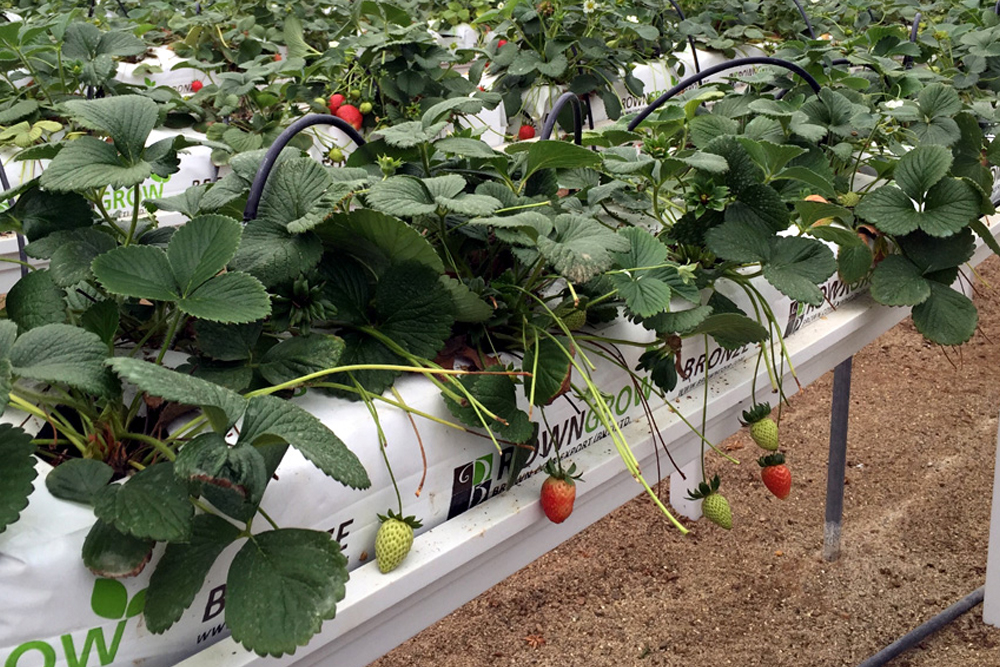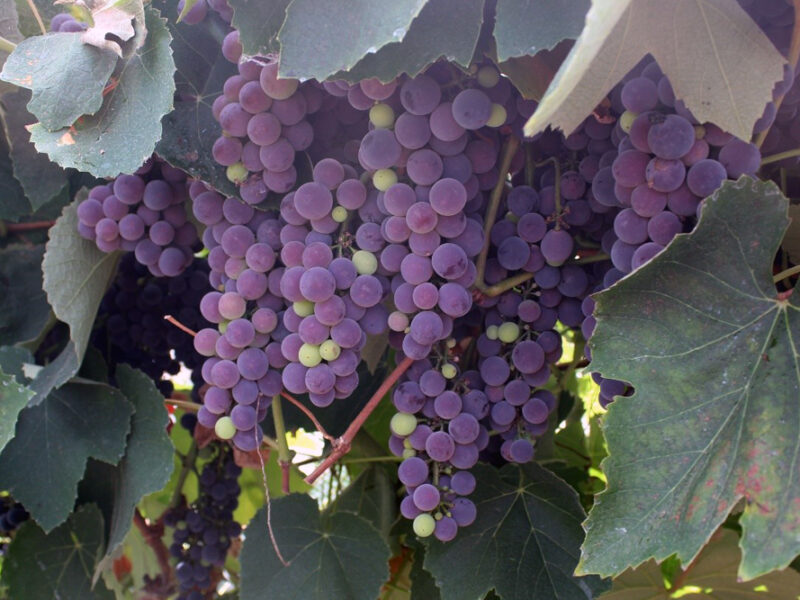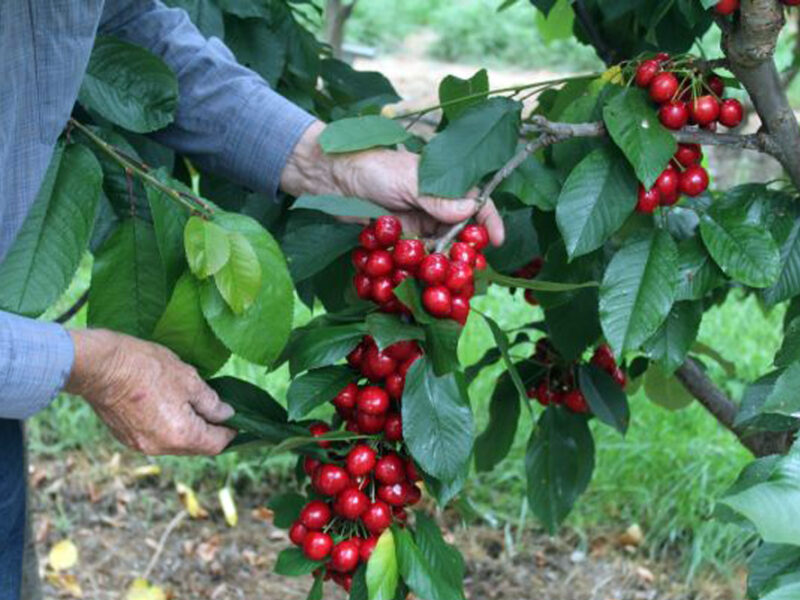The majority of the present day strawberries (Fragaria x ananassa) are the result of a chance cross by insects in a French Botanical garden. It is unlikely that this cross would every have occurred as the parents were F .virginiana from North America, and F. chiloensis a native to Chile, South America. These species normally grow thousands of kilometres away from each other but the plant hunters of the 18th Century brought them to France, and resulted in the present day large red strawberry. Since then, of course, there has been considerable breeding to improve the strawberry, by the inclusion of other genes from other Fragaria species.
For example the original strawberry requires short days and a period of low temperatures in order to initiate flowers, and these types (called June bearers), still have an important place in commercial strawberry production, but breeding with other species has also established a type which is described as day neutral, which will initiate flowers year round (except at high temperatures).
Although it is possible to grow strawberries from seed, which is the normal way of producing new varieties, the majority of new plants are vegetatively grown from runners which are produced by mature plants normally under long day conditions.
There area approximately 400,000 ha of strawberries grown worldwide, with PR China (123,000 ha) and USA (21,000 ha) being the largest producers (3.7 mill tonnes and 1.5 mill tonnes) respectively. The bulk of these is grown in the field (in soil) but there is a significant trend worldwide to producing strawberries in protective cultivation (high plastic tunnel greenhouses) using hydroponics and table top systems. This technology can increase yields to well over 100 t/ha , extend the harvest season, and reduce harvesting costs. Most, but not all hydroponic systems use coir as the basic growing medium, the only exceptions are some systems (in Japan) use aeroponics, and in Belgium peat still predominates—though is likely to disappear due to Global Warming concerns, and some growers still use rock wool.
One of the keys to successful strawberry fruit production is to plant only high health plant material. Strawberries suffer from a number of virus and soil borne diseases, and productivity can be seriously reduced if these are present. Runners plants can be produced in land which has been fumigated against soil borne pathogens, although the “tip runner” method is gaining favour for greenhouse production. This involves growing the mother plants hydroponically 2 metres above the ground, and allowing the runners which develop to hang down, and to be “harvested” when large enough, and “planted” into a sterile medium in mist propagation unit for 10-15 days in order to develop roots.

Reference:
Nichols M A (2021) “Strawberries” in “Advances in horticultural soilless culture (ed. Prof Nazim Gruda) ” 424 pp. Burleigh Dodds Science Publishing, Cambridge, UK.
– Mike Nichols



